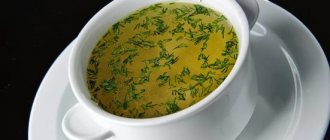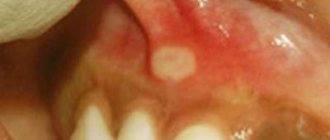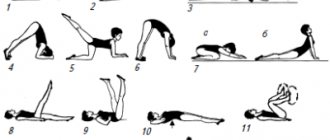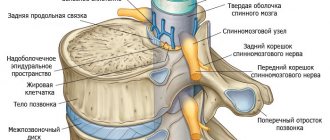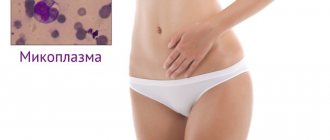What it is? Duodenitis is an inflammatory process in the mucous membrane of the duodenum, causing structural changes in the mucous membrane and leading to functional disorders of the organ. According to statistics, more than 10% of the population have experienced symptoms of duodenitis - this is the most common pathology of the initial part of the small intestine.
People of different age categories are susceptible to the disease. It is twice as common in men who are addicted to alcohol and prone to a “reckless” lifestyle. Women have a hard time enduring pathology. In them it is accompanied by pathological processes in the endocrine glands and central nervous system.
Provoke the development of duodenitis:
- food poisoning and infections;
- frequent consumption of provocative foods (fried, fatty, salty, smoked);
- alcohol or its substitutes;
- dry food and damage to the mucous membrane of the intestinal wall by a foreign body.
In addition, inflammatory reactions in the mucous membranes of the walls of the duodenum can be a consequence of ascariasis, giardia, or tuberculosis, ENT infections and gallbladder infections.
A consequence of possible complications of certain diseases (damage to the gastric mucosa, inflammatory pathologies in the gallbladder, ulcerative lesions of chronic renal failure). Most often, the impetus for the development of duodenitis is gastritis, although the influence of food allergies cannot be ruled out.
- Treatment of duodenitis, drugs
- Forecast and prevention of duodenitis
Erosive duodenitis: what is it?
To begin with, it is worth considering the question of what constitutes a disease. Erosive duodenitis is a disease that is characterized by the appearance of cracks and ulcers on the mucous membrane of the duodenum against the background of an inflammatory process. The disease can be acute or become chronic.
It is worth noting that changes in the intestinal mucosa affect the digestive processes. Moreover, patients with chronic duodenitis often experience pathologies of the liver, pancreas, gallbladder and other complications.
Classification of duodenitis
In their daily work, various specialists (clinicians, endoscopists, pathologists) use different classifications of duodenitis. However, everyone stands out:
- acute duodenitis;
- chronic duodenitis.
Based on the location of inflammation, duodenitis is divided into:
- bulbitis or proximal duodenitis (only the bulb is affected) is the most common form;
- postbulbar or distal duodenitis (inflammation is detected in the bulbous sections);
- papillitis or local duodenitis (the process is localized in the area of the duodenal papilla);
- diffuse or total duodenitis (the entire organ is involved).
During an endoscopic examination, the following types of duodenitis are determined by visual data:
- erythematous (mucosal mucosa is swollen and reddened);
- hemorrhagic (if hemorrhages are detected - hemorrhages);
- atrophic (this method is able to detect only indirect signs of the presence of atrophy - thinning of the mucosa, visualization of translucent vessels; a histological assessment allows definitive confirmation of atrophic changes);
- erosive (in case of formation of surface defects in the mucosa - erosions)
- nodular (when small formations resembling nodules are visible).
In addition, endoscopists often assess the degree of activity of the existing inflammation (I – III).
Examining and analyzing the structure of the duodenal mucosa under a microscope, pathomorphologists distinguish:
- superficial duodenitis (only the superficial layers of the mucous membrane have undergone changes);
- diffuse or interstitial duodenitis (the entire thickness of the duodenal mucosa is affected)
- atrophic duodenitis.
In addition, they qualify duodenitis according to the degree of active inflammation, the severity of atrophy, the number of inflammatory cells in the mucosa, and bacterial colonization.
The main reasons for the development of the disease
Quite often, duodenitis (including erosive) is caused by regular consumption of food and drinks that irritate the intestinal mucosa, in particular coffee, fatty, spicy and smoked foods. Risk factors include chronic alcoholism.
The entry of toxins, poisons and chemically aggressive substances (chlorine compounds, alkalis, acids) into the digestive tract also causes irritation and the appearance of ulcers. Uncontrolled use of certain medications can lead to the same result.
The list of causes includes some infections. In particular, the disease may be associated with the active proliferation of enterococci, staphylococci and Helicobacter pylori. Duodenitis is sometimes a complication of other diseases, in particular peptic ulcers, colitis, pancreatitis, cirrhosis and hepatitis. The inflammatory process can worsen due to stress and emotional stress.
Treatment for adults
Treatment of acute duodenitis in adults depends on the form of the disease. In some cases, recovery can be carried out at home, but in case of severe exacerbation, hospitalization and treatment in a hospital are necessary.
When treating a chronic form of duodenitis, hospitalization is necessary, following a fasting diet and taking all prescribed medications. Preparations for neutralizing hydrochloric acid are highly effective.
The erosive form of duodenitis involves eating pureed and warm food with the obligatory exclusion of coarse and hard foods that can damage the affected duodenal mucosa. When following a diet, it is necessary to consume the maximum amount of liquid.
For superficial duodenitis, the basis of treatment is proper nutrition with the exclusion of all harmful foods and taking medications that improve intestinal motility. It is recommended to use herbal decoctions (chamomile, mint, yarrow) and avoid strong physical activity.
Exacerbation of the ulcerative form of duodenitis implies the exclusion of medications and requires adherence to a starvation diet with the gradual introduction of neutral foods prepared using safe cooking methods (steaming, stewing, baking).
What symptoms are accompanied by the disease?
What disorders are accompanied by erosive duodenitis? Can it cause abdominal discomfort? Many patients are looking for answers to these questions.
Of course, inflammation of the intestinal mucosa is accompanied by pain in the epigastric region. The pain can be sharp or dull, but constant. Along with this, signs of digestive problems appear. Patients complain of nausea, diarrhea or constipation, loss of appetite, bloating and rumbling in the stomach after eating.
Compounds released as a result of the inflammatory process cause general intoxication of the body, which is accompanied by weakness, fatigue, and sometimes fever and aches.
One of the characteristic signs of duodenitis is bitter belching. Sometimes bile appears in the vomit. This is due to the overflow of the duodenum and the backflow of its contents into the stomach.
The chronic inflammatory process is accompanied by pathological changes in the mucous membrane, which affects the absorption of nutrients. This provokes disorders of the nervous and endocrine systems.
Symptoms of duodenitis
Duodenitis can begin either suddenly or gradually. It often manifests itself after some kind of dietary excess, alcohol consumption, or stress. Duodenitis is usually difficult to distinguish from other ailments of the digestive system. After all, it is characterized by the same clinical signs as most other gastroenterological ailments:
- pain (mild or very intense pain is associated with the type and time of food intake, and occurs in the upper areas of the abdomen: epigastric region, hypochondrium);
- signs of gastric dyspepsia (heaviness, burning or discomfort in the epigastric region; belching, nausea, bloating);
- problems with stool (chronic diarrhea or systematic constipation, their alternation);
- psycho-emotional disorders (unmotivated irritability, tearfulness, rapid emotional exhaustion, etc.).
Depending on the combination of symptoms, duodenitis may have the following clinical forms:
- ulcer-like (the most common variant, “night” and “hungry” pains in the upper abdomen are extremely reminiscent of those that are characteristic of a peptic ulcer; they are combined with sour belching and persistent constipation);
- gastritis-like (pain occurs after eating and is often accompanied by gastric dyspepsia);
- cholecyst-like (pain similar to biliary colic, feeling of bitterness in the mouth, vomiting bile);
- pancreatic-like (patients have pain mainly in the left hypochondrium, “girdling” pain, diarrhea, and vomiting may be observed);
- neurovegetative (sweating, episodes of lightheadedness and weakness, rapid heartbeat, etc.);
- mixed (with this form, patients exhibit signs of various other forms of duodenitis);
- asymptomatic (established in case of complete absence of clinical manifestations, common among elderly patients).
Diagnostic measures
As a rule, patients consult a doctor with quite characteristic symptoms: nausea, vomiting, belching, abdominal pain. First, the specialist collects a complete medical history, after which he palpates the abdomen, paying special attention to the epigastric area. Laboratory tests of blood (an increase in ESR) and feces (blood impurities in excrement can be determined) are necessary.
An available method is fluoroscopy using contrast. Unfortunately, such a study is unable to detect the presence of damage to the mucous membrane of the digestive tract. For this purpose, fibrogastroduodenoscopy is performed - using a special probe, the doctor carefully examines the inner surface of the esophagus, stomach and duodenum.
Diagnosis of duodenitis
A competent specialist is able to suspect duodenitis after a conversation with a patient who comes to him and his examination. But for final verification of this not very common diagnosis, a comprehensive and comprehensive examination is necessary. Its volume may vary, because the clinical situations of different patients differ. As a rule, the doctor first recommends:
- endoscopic examination - fibrogastroduodenoscopy (the main method that shows the condition of the duodenal mucosa, the presence of hemorrhages, ulcers, movement disorders and allows you to obtain biopsies for histological evaluation or detection of microorganisms in them);
- chromogastroduodenoscopy (using specific dyes - methylene blue, Congo-rot, endoscopists can indirectly assess the presence and prevalence of areas of gastric metaplasia in the duodenal mucosa and take mucosal samples from them - biopsies);
- histological (pathomorphological) assessment of the structure of the duodenal mucosa (records inflammatory changes and their severity, the development of atrophy, gastric metaplasia, Helicobacter pylori contamination, distinguishes between various forms of duodenitis);
- X-ray examination (fluoroscopy of the duodenum using a contrast suspension and double contrast can detect advanced severe duodenitis with coarse thickened folds of the mucosa and/or erosions, assess motor-evacuation abilities, establish post-ulcer scar deformation and distinguish it from spasm characteristic of duodenitis);
- tests for the detection of Helicobacter pylori microbes: express methods for studying biopsy specimens, enzyme-linked immunosorbent assay of feces and blood, bacteriological, molecular genetic, respiratory tests with urea;
- ultrasonography (in case of severe duodenitis, sometimes an experienced specialist may notice a thickened wall of the inflamed duodenum or signs of motility disorder, but the method is needed to exclude diseases of the pancreaticobiliary system, liver, kidneys);
- endoscopic ultrasonography (the study can be highly informative in case of local duodenitis with damage to the major duodenal papilla, as well as pancreatitis, scars and stones in the ducts, tumor process);
- duodenal intubation (a slightly forgotten technique that examines the quality of duodenal secretions, the safety of cavity duodenal digestion; reveals parasitic lesions);
- computer gastroenterography (a modern technique for analyzing the motor activity of the duodenum) or duodenokinesiography;
- examination of feces and blood for the presence of parasitic agents.
In the case of secondary duodenitis, individual patients may additionally be prescribed floor manometry, retrograde cholangiopancreatography, CT or MRI procedures, biochemical blood tests, coprogram, assessment of fecal elastase-1, fibroileocolonoscopy, 24-hour monitoring gastric pH-metry, enterography, hepatocholecystography, electrocardiography, renography, ultrasound of the heart and other methods.
Drug therapy
Therapy is tailored individually, since much depends on the causes of the disease and the general condition of the patient.
- Antibacterial drugs are used if inflammation is caused by activation of Helicobacter pylori. Tetracycline and Clarithromycin are considered effective.
- Proton pump inhibitors block the glands that secrete hydrochloric acid. This reduces the irritant effect on the mucous membrane of the stomach and intestines. In modern medicine, Esomeprazole and Omeprazole are used.
- Antacids provide local anesthesia and also have enveloping properties (Maalox, Almagel).
- Antispasmodics, in particular “Papaverine” and “No-Shpa”, relieve spasms, eliminate pain and improve the patient’s well-being.
- Sometimes multienzyme drugs are used that contain analogues of pancreatic enzymes. In this way, you can normalize the processes of digestion and absorption of nutrients. The most popular drug in this category is Creon.
Therapy is complemented by diet, as well as decoctions of medicinal herbs. In most cases, the disease can be managed, so the prognosis for patients is favorable.
Diagnostics
You need to prepare seriously for visiting a doctor. After all, the symptoms of duodenitis resemble those of other gastrointestinal diseases. To exclude other pathologies and correctly establish a diagnosis, the doctor must clarify all points regarding the course of your illness:
- Get ready to answer the questions: have you or your immediate relatives suffered from diseases of the digestive system (gastritis, ulcers, etc.); what is the nature of the pain syndrome, when exactly and how often does it occur and whether its occurrence is associated with meals; whether you suffer from heartburn or belching; Has the consistency of your stool changed recently?
- When examining and palpating, try to identify a place that is especially painful to pressure;
- Be careful when collecting material for testing (stool, urine, blood), follow the preliminary recommendations. You will be prescribed general urine and blood tests, a biochemical blood test, a coprogram, and if bleeding is suspected, a stool test for the presence of blood;
- Take a responsible approach to instrumental studies, pay attention to the preliminary preparation: ultrasound and computed tomography of the abdominal organs, endoscopy, test for the pH balance of gastric juice, colonoscopy, radiography of the stomach and small intestine using a contrast agent.
Diagnosis of different forms of duodenitis in adults:
- Acute duodenitis is diagnosed based on external symptoms and the results of a physical examination (pain on palpation in the pyloroduodenal area).
- Chronic duodenitis is also diagnosed based on data from a patient survey, symptoms, and physical examination results.
- In order to detect duodenal bleeding, it is necessary to take stool tests for occult blood. Probing of the stomach and duodenum has great diagnostic value in chronic duodenitis. With superficial and, especially, erosive duodenitis, an increase in the volume of gastric secretion is noted.
- Atrophic duodenitis, on the contrary, is often characterized by a decrease in acid formation in the stomach. X-ray examination is essential, in which changes in the relief of the mucous membrane and disturbances in motility of the duodenum are revealed.
- X-ray signs of periduodenitis are a sharp deformation of the bulb, limited mobility of the duodenum, and a decrease in its lumen.
- To accurately establish the diagnosis of chronic duodenitis, it is necessary to do an endoscopic examination, which allows us to determine the presence or absence of ulcerative defects, inflammatory changes in the mucous membrane of the stomach or duodenum.
- X-ray examination of the stomach and duodenum shows a change in the relief of the mucous membrane and a violation of their motor function.
- Cholecystography allows you to detect the presence of stones in the gallbladder and signs of a disorder of its contractile function.
- Ultrasound examination reveals deformations and thickening of the gallbladder with cholecystitis, changes in the structure of the pancreas with pancreatitis, etc.
Diet for erosive duodenitis
An important aspect of successful treatment is diet. During an exacerbation of the disease in the first 3-5 days, you should eat only pureed soups and mucous decoctions of cereals. In the future, you can gradually introduce new foods into your diet. The general principles of nutrition for duodenitis look approximately as follows:
- Meals should be fractional - you need to eat 4-6 times a day, but in small portions.
- The food should be warm. Food that is too cold or hot irritates the mucous membranes of the digestive tract.
- The diet should include pureed soups, semi-liquid porridges, boiled lean meat (it is advisable to pass it through a meat grinder), fermented milk products, juices, fruits and vegetables, but always without seeds and peels and only baked.
- The list of prohibited foods includes smoked meats, fatty fish and meats, ice cream, rich meat and mushroom soups, hot spices, raw fruits and vegetables, carbonated drinks and alcohol.
Prognosis and prevention
The prognosis for the treatment of acute duodenitis is quite favorable, since with properly prescribed therapy, acute signs of the disease disappear within 2–3 weeks. The advantage of recovery is complete cure of the pathology.
Prevention of the disease consists of following the recommendations below:
- Proper nutrition in frequent and fractional portions;
- Elimination of bad habits (alcohol, cigarettes);
- Maintaining a healthy and active lifestyle;
- Moderate physical activity;
- Timely visit to a gastroenterologist and identification of diseases of the gastrointestinal tract.
If acute duodenitis smoothly turns into a chronic form, then preventive measures must be observed constantly to avoid relapse of the disease.
Folk remedies
Unfortunately, many people know firsthand what erosive duodenitis is. Treatment can be supplemented with homemade remedies. There are several effective remedies that you can make yourself.
- Plantain juice is considered beneficial. The leaves of the plant need to be ground. 20 ml of squeezed liquid should be mixed with 20 g of honey (charmingly natural). The product should be taken three times a day immediately before meals.
- A decoction of St. John's wort helps with duodenitis. A tablespoon of the dry plant should be poured with boiling water (0.5 l) and allowed to brew. You need to drink half a glass half an hour before meals.
- Instead of tea, you can brew nettle leaves, as the plant accelerates regeneration processes.
- Doctors recommend drinking rice broth. A mucous decoction of flax seeds is considered beneficial. You can also cook rosehip jelly. These products have an enveloping effect, therefore protecting the mucous membrane from irritation.
Naturally, you should not use such means without permission. First, be sure to consult with a specialist. Only the attending physician will be able to supplement the drug therapy regimen with home remedies.
Causes of duodenitis
The causes of duodenitis can be:
- Incorrect location of the duodenum in the body;
- Weakness of the hormonal apparatus of the duodenum;
- Impaired motor function of the duodenum (duodenostasis);
- Infection of an organ with the bacterium Helicobacter Pylori;
- Dietary disorder;
- Eating spicy, sour, fried, fatty and smoked foods;
- Abuse of alcoholic and caffeine-containing drinks, smoking;
- Uncontrolled use of certain medications, such as non-steroidal anti-inflammatory drugs (NSAIDs - Aspirin, Ibuprofen), antibiotics;
- Gastritis;
- Duodenal ulcer;
- Disturbances in the functionality of the intestine: disturbances in its blood supply, trophism, tissue respiration;
- Other diseases of the gastrointestinal tract - liver (hepatitis, cirrhosis), pancreas (pancreatitis), intestines (colitis), gall bladder, mesentery.
The main reasons leading to the development of the inflammatory process in the mucous membrane of the duodenum are:
- abuse of fried, spicy, smoked and sour foods;
- abuse of drinks with a high caffeine content (energy drinks, coffee, strong tea, cola);
- smoking;
- alcoholism.
All of the above factors contribute to increased secretion of hyperacid gastric juice, that is, containing an increased concentration of hydrochloric acid. It enters the cavity of the duodenum, first causing irritation and then acute inflammation of its mucous membrane. When the disease becomes chronic, atrophic and degenerative processes occur in the intestinal wall.
Duodenitis often develops as a secondary process against the background of a number of the following pathologies of the digestive system:
- peptic ulcer of the stomach and duodenum;
- chronic gastritis;
- infection of the stomach and duodenum with the bacterium Helicobacter Pylori;
- disturbance of blood supply and innervation of the walls of the duodenum;
- chronic colitis, enteritis, pancreatitis, hepatitis;
- cirrhosis of the liver;
- helminthic infestations (giardiasis, ascariasis).
The mechanism of development of inflammation of the duodenum is inextricably linked with damage to the mucous wall by hyperacid juice coming from the intestines. Reduced protective properties of the duodenal wall, along with increased acidity, lead to severe irritation of the mucous membrane. As a result, acute inflammation occurs.
If the disease does not have pronounced symptoms, over time it transforms into a chronic process and acquires a recurrent cyclic course. The intestinal wall begins to atrophy, and degenerative processes are observed in it.
Doctors include factors contributing to the development of duodenitis:
- alcohol abuse;
- frequent consumption of fatty, spicy and smoked foods;
- poisoning with toxins (poisonous mushrooms, berries), medications;
- the presence of helminthic diseases (opisthorchiasis, ascariasis, giardiasis, enterobiasis), leading to decreased immunity, the addition of secondary bacterial infections, and mechanical damage to tissues.
The bacterium Helicobacter pylori also has a negative effect on the condition of the mucous membrane of the duodenum.
The best doctors for the treatment of duodenitis
8.8 81 reviews NutritionistGastroenterologistDoctor of the highest category
Ponomareva Alla Vasilievna Experience 34 years 9.5 81 reviews
GastroenterologistHepatologist
Vasilyeva Natalya Sergeevna Experience 35 years Candidate of Medical Sciences9.5 59 reviews
TherapistGastroenterologistHirudotherapistFirst category doctor
Butenko Elena Vladimirovna Experience 23 years Candidate of Medical Sciences8.8 292 reviews
HepatologistGastroenterologistDoctor of the highest category
Shanturova Evgenia Ibragimovna Experience 30 years 9.2 49 reviews
GastroenterologistHepatologistDoctor of the highest category
Sosnina Lyudmila Vladimirovna Experience 24 years 9.5 195 reviews
Infectious disease specialistHepatologistGastroenterologistDoctor of the highest category
Muravyova Tatyana Stanislavovna Experience 21 years Candidate of Medical Sciences9.5 90 reviews
GastroenterologistDoctor of the highest category
Aminova Alfiya Irshadovna Experience 34 years Doctor of Medical Sciences9.2 23 reviews
TherapistGastroenterologistDoctor of the highest category
Sosnina Tatyana Mikhailovna Experience 26 years 8.2 13 reviews
GastroenterologistDoctor of the highest category
Samarskaya Natalya Grigorievna Experience 10 years 9.5 19 reviews
PediatricianDieticianGastroenterologistDoctor of the highest category
Bandurina Tatyana Yurievna Experience 35 years Doctor of Medical Sciences
Consequences of the inflammatory process
Erosive gastritis and erosive duodenitis are common ailments that, fortunately, are relatively easy to treat. However, in some cases, diseases can lead to dangerous complications.
- Intestinal obstruction. Against the background of the inflammatory process, adhesions sometimes form, which prevent the passage of the food bolus through the intestines. The disease is accompanied by severe abdominal pain and vomiting after eating. This is an acute condition that requires immediate treatment.
- Peptic ulcer disease. Erosive duodenitis is often complicated by the formation of extensive ulcers. The disease is accompanied by vomiting, pain, bloating and other digestive disorders.
- Malabsorption syndrome. The pathology is accompanied by impaired absorption of nutrients by the intestinal mucosa. As it develops, exhaustion of the body, anemia, and immunodeficiency are observed.
- Intestinal bleeding. Erosive gastritis, duodenitis may be accompanied by blood loss. Patients feel dizzy and weak. There is blood in the stool. Against the background of massive blood loss, a sharp decrease in blood pressure is observed.
Clinical signs
Symptoms occur suddenly or appear constantly. Regularity depends on the form of pathology, concomitant diseases of the gastrointestinal tract, and abdominal organs. The main factors that provoke the manifestation of symptoms are overeating, drinking alcohol, and stressful situations. Similar symptoms of duodenitis with other inflammatory pathologies make it difficult to timely diagnose the disease and prescribe effective therapy.
The main clinical manifestations are:
- pain in the abdomen (epigastric part), right hypochondrium;
- indigestion: feeling of heaviness, fullness in the stomach after eating, bloating;
- belching with a bitter taste;
- heartburn;
- increased gas formation;
- nausea;
- vomiting mixed with bile;
- increased body temperature;
- yellow color of the skin;
- constipation, diarrhea;
- weakness;
- lack of appetite;
- irritability.
The nature of pain with duodenitis depends on the form of the disease and the degree of damage. With an exacerbation of a chronic type of pathology, dull spasms are constantly observed several hours after eating. The acute form has a pronounced pain syndrome in the epigastric region.
With the gastritis-like variety, spasms radiating to the back and left rib are localized in the upper epigastric part. With a pancreatic-like form of inflammation, the pain syndrome is girdling in nature. Distal duodenitis is characterized by spasms in the right hypochondrium, which appear after eating fatty, fried foods. The ulcerative variety is characterized by severe pain of a pronounced nature, on an empty stomach or at night.
During attacks, which are disguised as manifestations of a stomach ulcer, there is profuse sweating, rapid heartbeat, a feeling of hunger, and frequent loose stools. Bitter belching and vomiting with bile are characteristic of obstruction of the contents of the duodenum. Digestive disorders provoke stagnation of food, as a result – the process of fermentation and rotting.
The lack of timely treatment of duodenitis in adults leads to atrophy of the mucous membrane, failure to absorb nutrients, which negatively affects the functioning of the nervous system. Characteristic symptomatic signs of the process are dizziness, tremors of the upper extremities, and hormonal deficiency. In older people, clinical manifestations of the pathology may not be observed. Duodenitis in young children is accompanied by frequent regurgitation, irregular bowel movements, and tearfulness.
Prevention of duodenitis
What is erosive duodenitis? Symptoms and treatment, causes and complications - you are already familiar with this information. But is it possible to somehow prevent the development of the disease? In fact, there are no specific preventive measures. It is extremely important to follow the principles of a healthy diet, strictly control the amount of spices consumed, and avoid overly fatty and spicy foods. Alcohol consumption has a negative effect on the condition of the mucous membrane.
You should not skip routine medical examinations. If there are any complications, it is important to consult a doctor in time and undergo the full course of treatment.
Treatment for children
If suspicious symptoms appear in a child, it is necessary to immediately consult a doctor, as self-medication can lead to the development of undesirable consequences. After making an accurate diagnosis, you should follow all doctor’s prescriptions and balance your diet.
As an additional recovery, a course of physiotherapeutic procedures is prescribed. For quick rehabilitation, it is important to form the correct daily routine and eliminate all negative provoking factors that influence the further development of the disease.
Treatment of acute duodenitis in children does not imply the use of traditional medicine, since the effect of various drugs on the children's body has not been fully studied. In most cases, following the basics of proper nutrition is sufficient.
When examining the baby, the doctor performs the following actions:
- Conducting an initial examination;
- Palpation of the abdominal cavity;
- Prescribing certain types of studies based on the results of the initial examination.
The prescribed treatment is carried out on an outpatient basis, and in case of severe exacerbation, the child may be hospitalized for the period of rehabilitation.
Classification
According to the localization of the inflammatory process:
- bulbar;
- local;
- diffuse;
- postbulbar.
By origin:
- primary;
- secondary.
According to the results of endoscopic examination:
- Erosive duodenitis. The formation of erosive lesions of varying depths is characteristic. Erosive duodenitis is also known as hypertrophic.
- Atrophic duodenitis. Characteristic is the thinning or death of the cellular layer in the mucous membrane, which leads to disturbances in the secretion of digestive juice.
- Hemorrhagic duodenitis. Identified during a diagnostic search for the causes of duodenal bleeding.
- Erythematous duodenitis. With this form, the mucous membrane becomes swollen with severe redness.
- Nodular duodenitis.
According to the severity of structural lesions:
- interstitial;
- atrophic;
- superficial duodenitis (characterized by slight inflammation in the upper layer; superficial duodenitis is often found in the literature as catarrhal duodenitis).
Among the specific duodenitis it is customary to distinguish:
- immunodeficient;
- duodenitis in Whipple's disease;
- tuberculosis;
- for Crohn's disease ;
- with amyloidosis ;
- fungal.
Standard clinical classification
- duodenitis that developed against the background of duodenostasis ;
- chronically occurring acidopeptic bulbitis , combined with type B gastritis ;
- inflammation of the papilla or peripapillary diverticulitis as a separate local inflammatory process;
- chronic duodenitis, combined with enteritis or various enteropathies.
What is gastric duodenitis? There is no such medical term as “gastric duodenitis”, because The very concept of duodenitis implies inflammation of the mucous wall of the duodenum, and not the stomach. Although the cause of the inflammatory process in the intestines can be precisely the pathology of the stomach.
Treatment of duodenitis, drugs and diet
Nature has given us a wonderful gift: if you follow simple rules and a diet, in most cases acute duodenitis goes away on its own, and complete recovery occurs. In order for it to occur as quickly as possible, you need to adhere to the following rules, both when treating acute and severe exacerbation of chronic duodenitis:
- Semi-bed rest should be prescribed for one to two days. After all, any inflammation causes plethora (hyperemia), swelling, and a local increase in temperature in the area of inflammation. Therefore, there is no need to exercise excessive physical activity during duodenitis;
- In case of acute duodenitis, it is useful to fast for 1-2 days, without restricting water;
- You can place an ice pack (through the tissue) on the epigastric area.
About diet for the treatment of duodenitis
There is diet No. 1 according to Pevzner, which is suitable for exacerbations of diseases of the stomach and intestines. The most strict diet No. 1a is generally a mucous (for example, rice) soup heated to body temperature.
The purpose of the diet in the treatment of duodenitis is complete physical, chemical, mechanical and thermal preservation of the intestinal mucosa. All food is served in warm liquid or semi-liquid pureed form.
Medications
Symptomatic medications are mainly used to reduce pain and normalize digestion. These include:
- Myotropic antispasmodics (“No-Shpa”). Reduce pain and spasm of the inflamed intestine;
- Antiemetic drugs (Cerucal). Vomiting is harmful, since with an increase in intra-abdominal pressure, hemorrhages may occur in the inflamed intestine;
- Enzymes (“Festal”, “Enzistal”, “Pancreatin”, “Creon”). They should be prescribed to facilitate digestion in difficult conditions when pain subsides;
- Antacid, astringent and enveloping drugs are used, especially in case of insufficiency of the pyloric sphincter, for example, Maalox, Phosphalugel.
Treatment of exacerbation of chronic duodenitis is carried out according to the same scheme, and in the treatment of erosive duodenitis, the use of proton pump inhibitors, which suppress the synthesis of hydrochloric acid and accelerate the healing of erosions, plays an important role. Such drugs include the well-known omeprazole and other, more advanced representatives of this series of drugs.
If necessary, fight against Helicobacter pylori treatment regimen. To speed up healing, reparatives are prescribed. These include, for example, sea buckthorn oil and Solcoseryl.
Prognosis and prevention
If, after curing acute duodenitis, a person adheres to a moderate lifestyle, monitors his diet, and abstains from drinking alcohol, then acute duodenitis, the symptoms and treatment of which we have examined, will not become chronic.
If there are other chronic diseases of the gastrointestinal tract, such as, for example, chronic cholecystitis and chronic pancreatitis, then the duodenum is also in a dangerous state, since defective digestion occurs on “its territory”.
In order to avoid this, you need to limit your intake of fatty, spicy and smoked foods, give up bad habits and feasts. And if you still have to sit down at the festive table, then you need to take enzyme preparations in a timely manner and under no circumstances overeat.
- And then your duodenum will always delight you with good digestion.
Tags: stomach, intestines
- Tracheobronchitis - types, symptoms and treatment, drugs
- Sacroiliitis - degrees and symptoms, treatment, drugs
- Vasomotor rhinitis - symptoms and treatment in adults...
- Sinus tachycardia - danger, symptoms and...
- Atrial fibrillation - causes, symptoms and...
- Microstroke - first signs and symptoms, treatment,…
Complications
If treatment is untimely or absent, duodenitis progresses and can lead to a number of dangerous complications.
- Ulcerative lesions of the duodenum. Under the influence of the inflammatory process and the action of stomach acid, an ulcer forms on the intestinal wall. The pathology is manifested by painful sensations in the epigastrium, especially after physical overload, alcoholic libations or long intervals between meals.
- Intestinal obstruction. The complication manifests itself as intense pain after eating in about a quarter of an hour. Patients are concerned about bilious vomiting.
- Bleeding in intestinal structures. If the patient suffers from an erosive form of inflammation, then such a complication is very likely. Patients experience signs of hypotension, blood in the stool, dizziness and chronic weakness.
- Impaired intestinal absorption develops against the background of enzymatic deficiency. At first, signs of malabsorption are associated with diarrhea, but as the pathological process progresses, they are supplemented by an immunodeficiency state and anemia. In pediatric patients, physical developmental delays are observed.
Tests and diagnostics
The disease is diagnosed based on the results of the endoscopic picture obtained during gastroscopic examination. Additional diagnostic methods are:
- X-ray examination of the stomach and duodenum;
- determination of pH of gastric juice and its biochemical study;
- duodenal intubation;
- coprogram;
- blood chemistry.
A biopsy specimen is taken and examined if malignancy of the pathological process is suspected.
Treatment
Drug therapy
Patients with chronic duodenitis are prescribed drug therapy, the purpose of which is:
- reduction of clinical symptoms of the disease;
- prevention of exacerbation frequency;
- prevention of complications of the disease (the appearance of ulcers on the mucous membrane, inflammation of the pancreas or biliary tract).
The selection of medications is carried out taking into account the form of pathology and concomitant diseases.
If an ulcerative form of the disease or a primary version of chronic duodenitis is diagnosed, and Helicobacter pylori bacteria are found in the gastric secretions, then the following treatment is indicated:
- Decreased secretory activity of the stomach. For this purpose, proton pump inhibitors (Omeprazole or Esomeprazole) are prescribed. These drugs effectively suppress the production of hydrochloric acid. Treatment with these drugs is carried out not only during exacerbation of the disease, they are also prescribed as maintenance therapy.
- Antacids, drugs that reduce the acidity of gastric juice, and also protect the mucous membrane of the stomach and duodenum from its damaging effects (Almagel, Phosphalugel and others).
- Antacids with adsorbing properties - bismuth preparations (De-nol and analogues). In addition to the protective effect, bismuth preparations also have an antibacterial effect.
- To eliminate Helicobacter pylori bacteria, a weekly course of antibiotics (Metronidazole, Clarithromycin and Amoxicillin) is prescribed.
The secondary chronic form of the disease occurs against the background of concomitant diseases. Therefore, drugs are selected taking into account what pathology caused inflammation of the duodenum. There are two main types of these pathologies.
Diagram of duct arrangement
With increased motility of the gallbladder, bile ducts and duodenum, patients are bothered by severe pain and frequent loose stools. Vomiting is often associated. Food is poorly digested.
- To eliminate severe pain, analgesics are prescribed in the form of injections:
- Analgin;
- Tramal;
- antispasmodics - for moderate pain.
- To eliminate spasm of the smooth muscles of the intestine and ducts, which causes increased motility of these organs, a solution of Atropine or Platyphylline is prescribed intramuscularly.
- To improve food absorption, enzymes and antiemetics (Cerucal, Bimaral) are prescribed.
Just as in the treatment of ulcerative forms of pathology, the following are prescribed:
- antacids, which protect the intestinal mucosa from the aggressive effects of excess bile;
- antibiotics, nitrofurans and sulfonamides to eliminate Helicobacter pylori bacteria;
- proton pump inhibitors;
- prebiotics to restore intestinal flora.
With a decrease in motility of the biliary tract and intestines, stagnation of bile and intestinal contents develops. The absorption of food and its evacuation into the small intestine are impaired. The goal of treatment for this form is to improve the contractile function of the digestive organs and eliminate congestion, against the background of which inflammation of the duodenal mucosa develops.
The following drugs are prescribed:
- Duspatalin - selectively relieves spasm of the smooth muscles of the intestine and ducts, but does not reduce its contractile activity.
- Motilium - improves the evacuation of food masses.
- Enzymes.
- Allahol or Cholenzym - have a choleretic effect.
- Salicylic acid preparations and mineral waters increase the liquid part of bile.
- Laxatives (for constipation).
The total duration of the treatment course is 1 month.
An additional method of unloading the contents of the duodenum and gall bladder is duodenal intubation. During this procedure, a three-stage evacuation of food secretions from the intestine is performed, then bile from the bladder and then from the ducts.
Treatment of the disease is always carried out against the background of dietary nutrition.
Drugs to treat the disease (gallery)
Metronidazole eliminates Helicobacter pylori bacteria
Cerucal improves food absorption
Analgin relieves pain
Cholenzym has a choleretic effect
Motilium improves the evacuation of food masses
Duspatalin relieves spasms of intestinal smooth muscles
Diet
Treatment of exacerbation of chronic duodenitis is best done in a hospital setting. This will be a kind of guarantee that the patient will strictly adhere to the prescribed diet. In addition, patients need a therapeutic and protective regime.
The concept of “therapeutic and protective regime” includes complete cessation of smoking and drinking alcohol.
The main role in reducing inflammation belongs to adherence to the principles of dietary nutrition:
- Meals should be fractional - 5-6 times a day.
- The temperature and consistency of food are as gentle as possible.
- The diet is selected depending on the form of the disease and concomitant pathology.
In case of chronic duodenitis, regardless of concomitant pathology, the following products are excluded:
- canned food;
- smoked meat;
- cold drinks and ice cream;
- alcohol;
- hot seasonings - pepper, mustard;
- onion and garlic;
- hot drinks, coffee and strong tea.
Recommended dishes:
- milk soups;
- vegetable puree soups cooked in meat broth. To prepare broths, lean varieties of meat and fish are used;
- vegetable purees from pumpkin, potatoes, zucchini, carrots and beets;
- non-acidic fruits, preferably baked;
- dairy products - cottage cheese, sour cream, milk, cheese;
- lean meat, chicken and boiled fish;
- drinks: tea with milk, diluted vegetable and fruit juices, rosehip decoction.
Depending on the clinical form of chronic duodenitis, one or another diet is prescribed:
- For ulcerative variants, as well as in combination with chronic enteritis, diet No. 1.
- For gastritis due to secretory insufficiency - diet No. 2.
- When combined with diseases of the liver and biliary tract - diet No. 5.
- When combined with pancreatitis - diet No. 5p.
Products prohibited for duodenitis (gallery)
Coffee
Onion and garlic
Alcohol
Ice cream
Smoked meat
Canned food
Diet No. 1
This diet excludes foods that stimulate the production of gastric juice. As part of this nutrition system, patients with chronic duodenitis are allowed to:
- Boiled eggs, no more than two per day.
- Yesterday's baked goods made from wheat flour, crackers and cookies.
- Low-fat dairy products - cottage cheese, sour cream, milk.
- Any vegetables, boiled and pureed.
- Buckwheat, oatmeal, semolina and rice porridge.
- Ripe sweet fruits (bananas, apples and pears).
- Steamed cutlets made from lean meat, fish and chicken.
- Soups with vegetable broth.
- Milk soups with well-cooked cereals.
- Vegetable puree soups made from carrots, cauliflower, potatoes, pumpkin, zucchini and green peas.
Prohibited on this diet are foods that cause increased formation of hydrochloric acid in the stomach:
- Fresh cabbage, radish, radish.
- Millet and corn cereals, brown and brown rice.
- Rye flour products and fresh baked goods.
- Peas and red beans.
In case of erosive form of duodenitis, cream soup and vegetable salads are allowed
Sample menu:
- breakfast - rice porridge from glutinous cereals, tea with milk and cookies;
- second breakfast – baked apple or banana;
- lunch – vegetable puree from zucchini and potatoes, steamed chicken cutlet, tea with milk;
- afternoon snack - jelly with crackers;
- dinner - milk noodle soup, boiled beet salad with sour cream, rose hip decoction;
- 2 hours before bedtime – low-fat cottage cheese with sour cream, dried fruit compote.
Diet No. 5
When chronic duodenitis is combined with diseases of the biliary tract and pancreas, diet No. 5 is prescribed. The goal is to normalize bile secretion, reduce the load on the liver and pancreas.
Authorized products:
- “yesterday’s” wheat and rye bread;
- boiled meat and fish from low-fat varieties;
- fresh vegetable salads from cabbage, carrots, green peas;
- boiled and baked vegetables (pumpkin, zucchini, potatoes, carrots);
- milk and cereal soups;
- porridge from oatmeal and buckwheat, as well as pilaf.
Diet No. 5 excludes:
- hard-boiled and fried eggs;
- meat and fish broths;
- legumes;
- mushrooms;
- cocoa and chocolate;
- fat cottage cheese and sour cream;
Butter and cheese are limited. Soft-boiled eggs - no more than two per week.
Sample menu:
- breakfast – 1 egg omelet, low-fat cottage cheese with honey, compote;
- second breakfast – fruit salad with yogurt;
- lunch - vegetable puree soup in water, boiled potatoes with steamed fish meatballs;
- afternoon snack – a glass of low-fat kefir with cookies;
- dinner - boiled noodles with a steamed cutlet of lean meat, tea with breadcrumbs;
- 2 hours before bedtime – a glass of jelly.
Diet No. 5p
Authorized products:
- vegetarian pureed soups (carrots, potatoes, pumpkin, etc.);
- dried or yesterday's bread;
- unsweetened dry biscuits;
- lean meat: rabbit, chicken, turkey;
- low-fat dairy products;
- pureed and semi-viscous porridge (oatmeal, buckwheat, semolina);
- boiled vegetables (potatoes, carrots, beets, zucchini, pumpkin);
- non-acidic fruits and berries
- tea with lemon, rosehip infusion, diluted juices.
Prohibited products:
- soups with meat broth, milk soups, cabbage soup;
- fresh bread, puff pastry and pastry products;
- fatty meats (pork), fried and salted fish, caviar, canned food;
- fatty dairy products;
- legumes;
- radish, turnip, radish, onion, garlic, sorrel, spinach, sweet pepper, mushrooms;
- grapes, dates, figs, bananas, confectionery, chocolate, jam, ice cream;
- coffee, cocoa, carbonated and cold drinks, grape juice.
Sample menu:
- First breakfast: boiled meat, oatmeal, unsweetened tea.
- Second breakfast: steamed omelette, rosehip decoction.
- Lunch: vegetarian vegetable soup, steamed chicken cutlet, boiled potatoes, pureed dried fruit compote.
- Afternoon snack: cottage cheese, tea.
- Dinner: boiled fish, apple puree, tea.
- At night: kefir.
Surgical treatment of the disease
This treatment method is used in cases of ineffective conservative therapy.
Surgical treatment is indicated for the following conditions:
- Spasm of the sphincter of the bile duct, which opens into the lumen of the duodenum. In this case, an endoscopic incision is made into the smooth muscle of the sphincter - papillosphincterotomy.
In case of spasm of the sphincter of the bile duct, papillosphincterotomy is performed
- The presence of adhesions. In this case, they are excised. Further tactics depend on how well the motor function of the duodenum is preserved.
- Impaired contractility of the smooth muscles of the duodenum, which could not be cured with medications. In this case, an operation is performed - the creation of an intestinal anastomosis.
- The presence of an additional loop and associated excess mobility. In this case, an operation is performed to fix the loop to the mesentery.
After such operations, stagnation of intestinal contents is eliminated and food evacuation is improved. Symptoms of chronic inflammatory process gradually disappear.
Duodenitis in children
A distinctive feature of inflammation of the duodenum in children is its primary nature (secondary duodenitis is rarely diagnosed in pediatric practice) . The disease affects children of all ages and its clinical symptoms differ little from the course of a similar pathology in adults. The most common causes of the development of the inflammatory process in a child are nutritional defects (poor diet, non-compliance with the regime, dry eating), food allergies, and helminthic infestations.
Complications of duodenitis in childhood occur rarely, but a long course of the disease (more than 3 years) leads to the spread of the pathological process to the distal parts of the intestine. Disease of the duodenum in children is in almost all cases accompanied by gastritis or cholecystitis and, if left untreated, leads to the development of gastroduodenitis (inflammation of the pyloric part of the stomach, which provokes atrophy of the mucosa).
Severe symptoms of the pathology persist for 1-2 weeks, after which a period of remission begins, during which children may not complain, but pain on palpation of the abdomen persists. If your child has the following symptoms, you should consult a doctor for a diagnostic examination:
- the occurrence of attacks of pain in the right hypochondrium (appear 1-2 hours after eating or on an empty stomach);
- tendency to constipation;
- dependence of pain on the nature of the food consumed (poor tolerance to spicy, salty, very hot or cold foods, carbonated drinks);
- fast saturation;
- pain on palpation of the pyloroduodenal zone (right side of the middle abdomen);
- increased sweating;
- drowsiness.
Prevention
Proper and balanced nutrition is the basis for the prevention of erythematous gastroduodenitis. In addition, throughout your life you must adhere to the following rules:
- maintain a sleep and rest schedule;
- engage in a feasible sport;
- treat diseases in a timely manner;
- observe the rules of personal hygiene;
- take medications only with the permission of a doctor;
- stop smoking and drinking alcohol;
- avoid stress.
These recommendations will significantly reduce the risk of developing the disease. It is not difficult to cope with erythematous gastroduodenitis; it is important to follow all the doctor’s recommendations and adhere to a therapeutic diet. But it should be borne in mind that in patients who did not adhere to all prescriptions, their condition may worsen and complications in the form of erosions and ulcers in the stomach may appear.
Causes
Based on the nature of the inflammatory process, two types of duodenitis are distinguished, which differ in the etiology of development - primary and secondary. Two factors play a leading role in the development of both types of disease:
- weakening of the intestine (occurring as a result of pathological processes or due to the genetic characteristics of the body);
- exposure to irritants on a weakened area.
Primary inflammation develops as an independent disease, not associated with pathologies of other organs and parts of the intestine. The causes of isolated duodenitis (which is very rare) are:
- violation of proper nutrition (irregularity of meals, excessive consumption of foods that irritate the mucous membrane - very spicy, sour, hot dishes, smoked products);
- food poisoning;
- consumption of strong alcoholic drinks;
- smoking;
- mechanical damage to the intestinal mucosa by foreign objects;
- frequent or periodic severe stress;
- long-term use of potent medications that irritate the intestinal mucosa (such as antibiotics, anti-inflammatory and hormonal drugs);
- abuse of drinks containing caffeine.
Secondary duodenitis occurs against the background of a violation of the integrity of the mucous membrane, which loses its ability to withstand the aggressive action of gastric juice, pathogenic microorganisms and other irritating factors . The reasons for the deterioration of the condition of the initial part of the small intestine are:
- trophic disorders of some parts of the stomach or duodenum (peptic ulcer);
- food allergies;
- chronic pancreatitis (a group of syndromes characterized by impaired transfer of enzymes secreted by the pancreas into the duodenum);
- penetration of infectious agents into the intestines (spiral-shaped bacterium Helicobacter pylori, which, due to its ability to form a biofilm, is immune to the immune response of the human body and the aggressive environment of the stomach);
- food toxic infections caused by staphylococci, enterococci, clostridia;
- reflux – reverse flow of the contents of the small intestine (returns to the duodenum);
- chronic gastrointestinal and liver pathologies (gastritis, hepatitis, cirrhosis, colitis, etc.).
The main pathogenetic element of the interconnected chain of inflammatory factors is a violation of the functionality of the duodenum (deterioration of blood supply, trophism, tissue respiration). The reasons predisposing to these processes are:
- genetically predetermined (congenital) abnormal location of the intestine;
- hormonal imbalances;
- duodenostasis (impaired patency of the duodenum of a mechanical or functional nature), which leads to deterioration of peristalsis;
- adhesions in the abdominal cavity (a common consequence of surgery);
- giardiasis (damage to the small intestine by parasites);
- uremia (a disease that leads to a shift in pH levels towards oxidation);
- penetration of toxic substances or foreign objects into the body (can occur through accidental ingestion).
What is chronic duodenitis
Chronic duodenitis is a series of long-term diseases with inflammation of the duodenum. As the pathology progresses, there is a violation of the integrity of the epithelium, which leads to the formation of chronic gastritis or enteritis.
Most often, the disease occurs in conjunction with other disorders of the gastrointestinal tract. According to statistics, duodenitis in most cases develops in men. Moreover, the pathology is often found in females. If left untreated, inflammation has serious complications and can develop into an oncological process.

